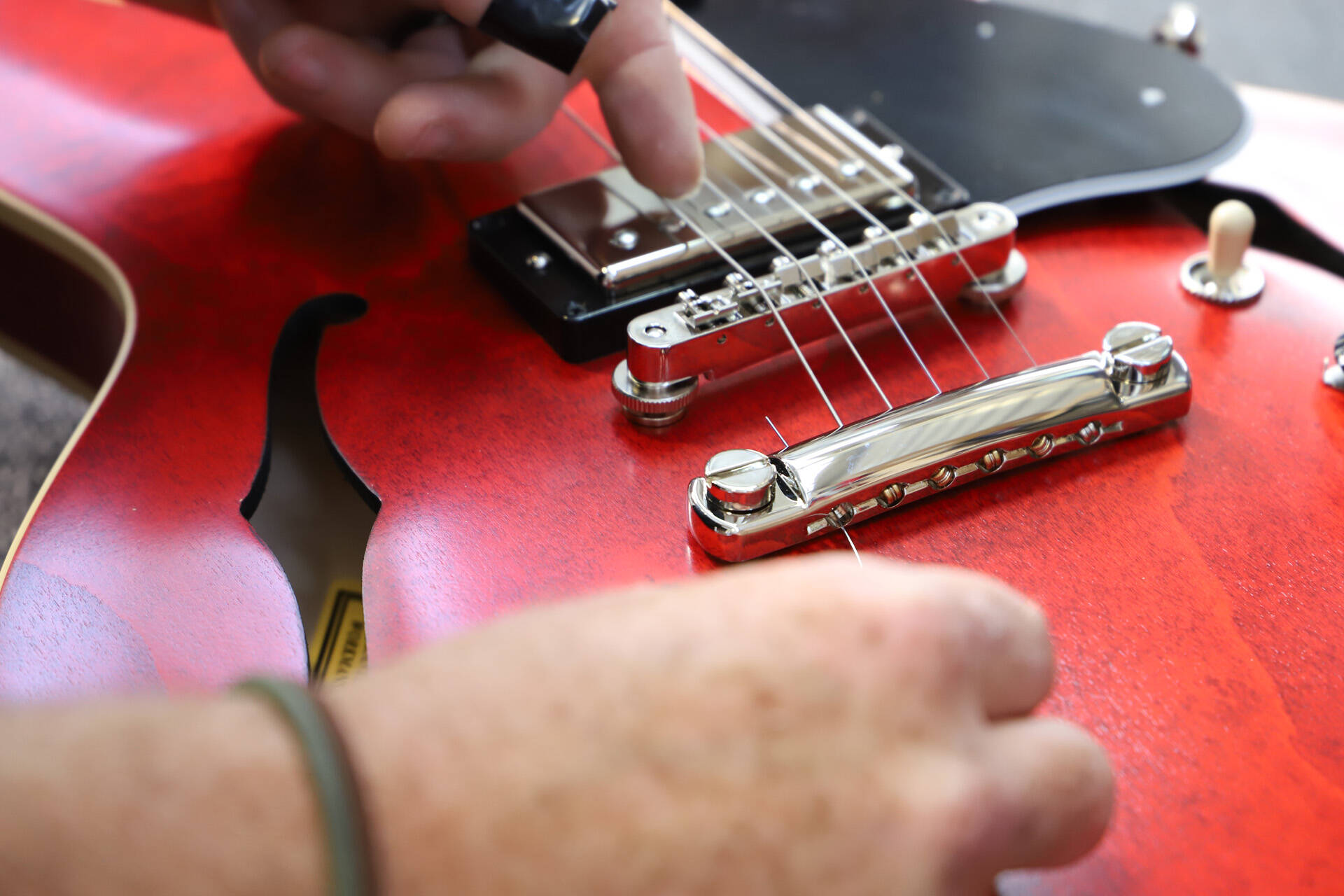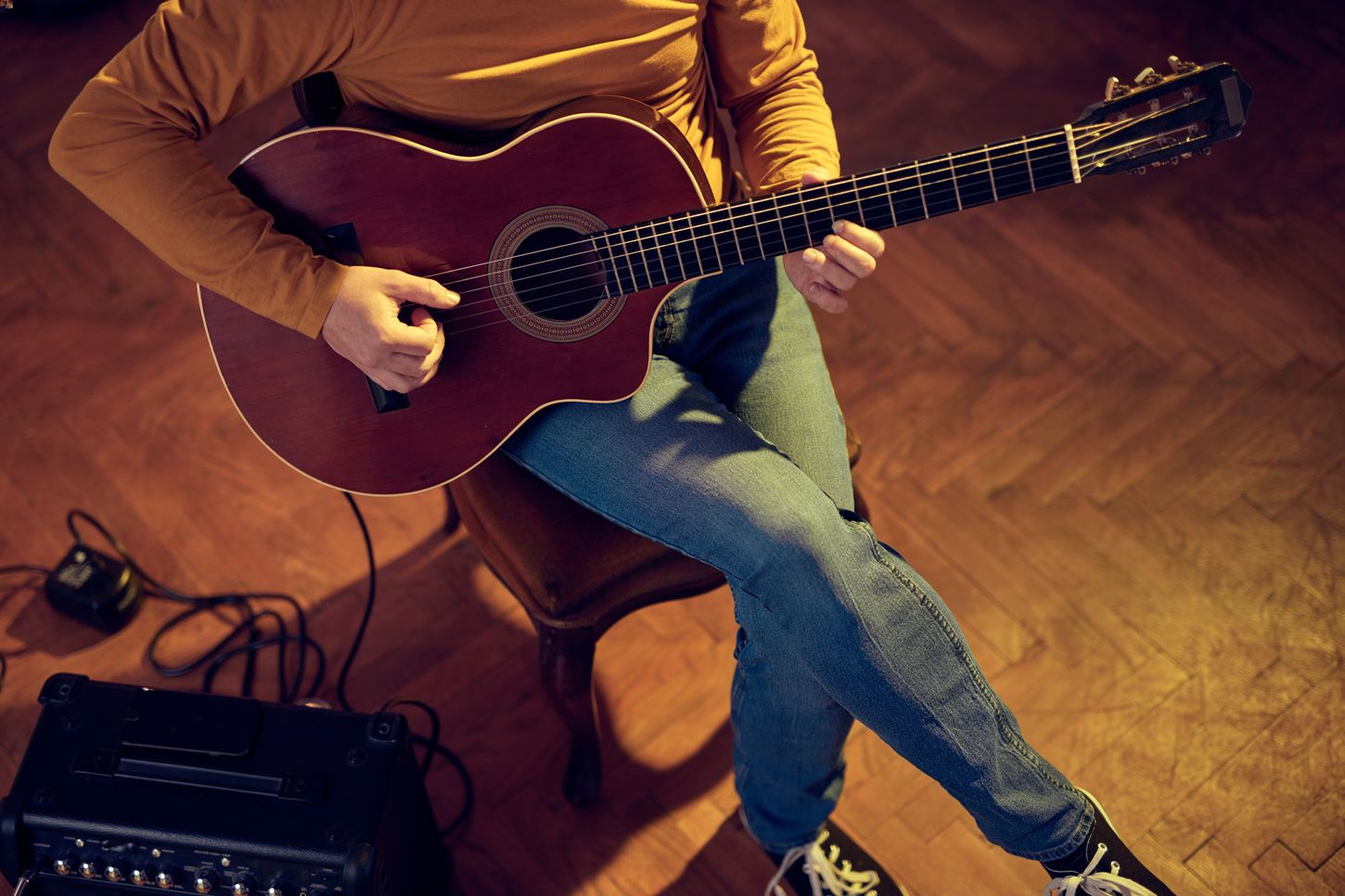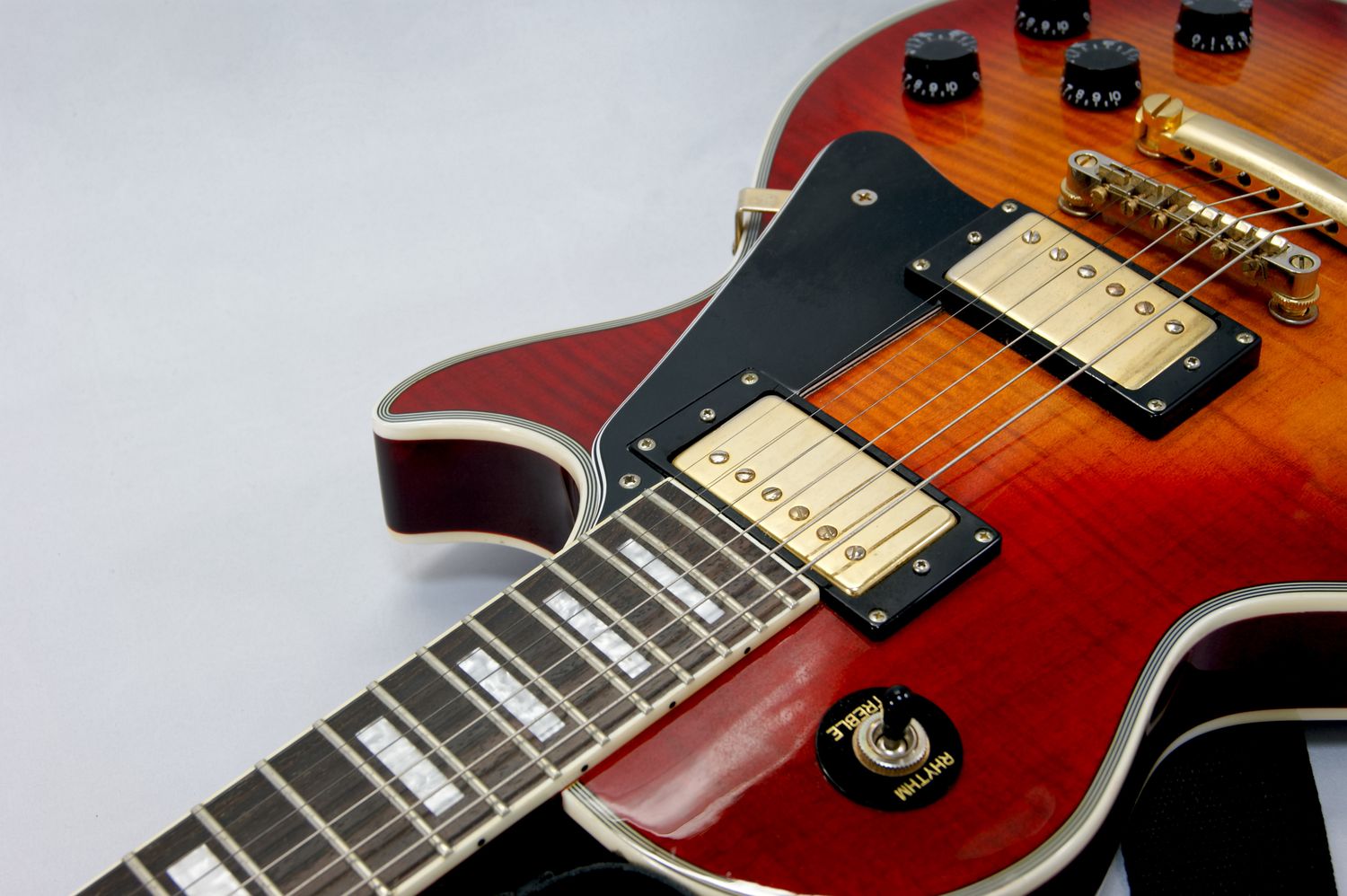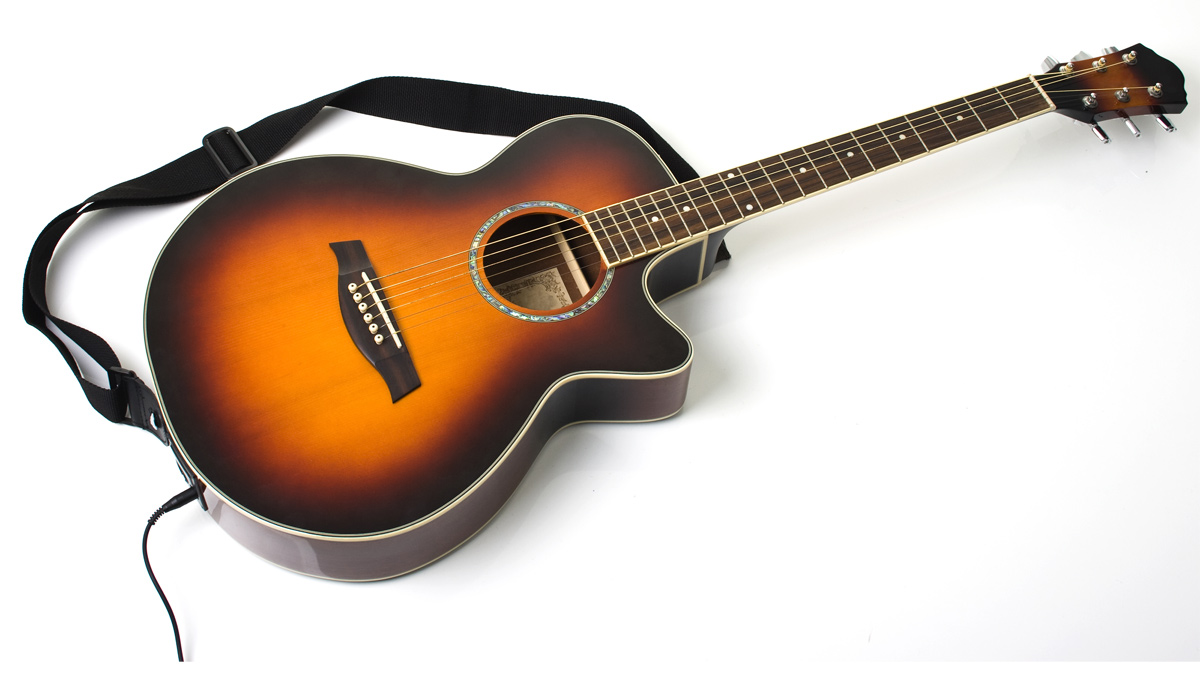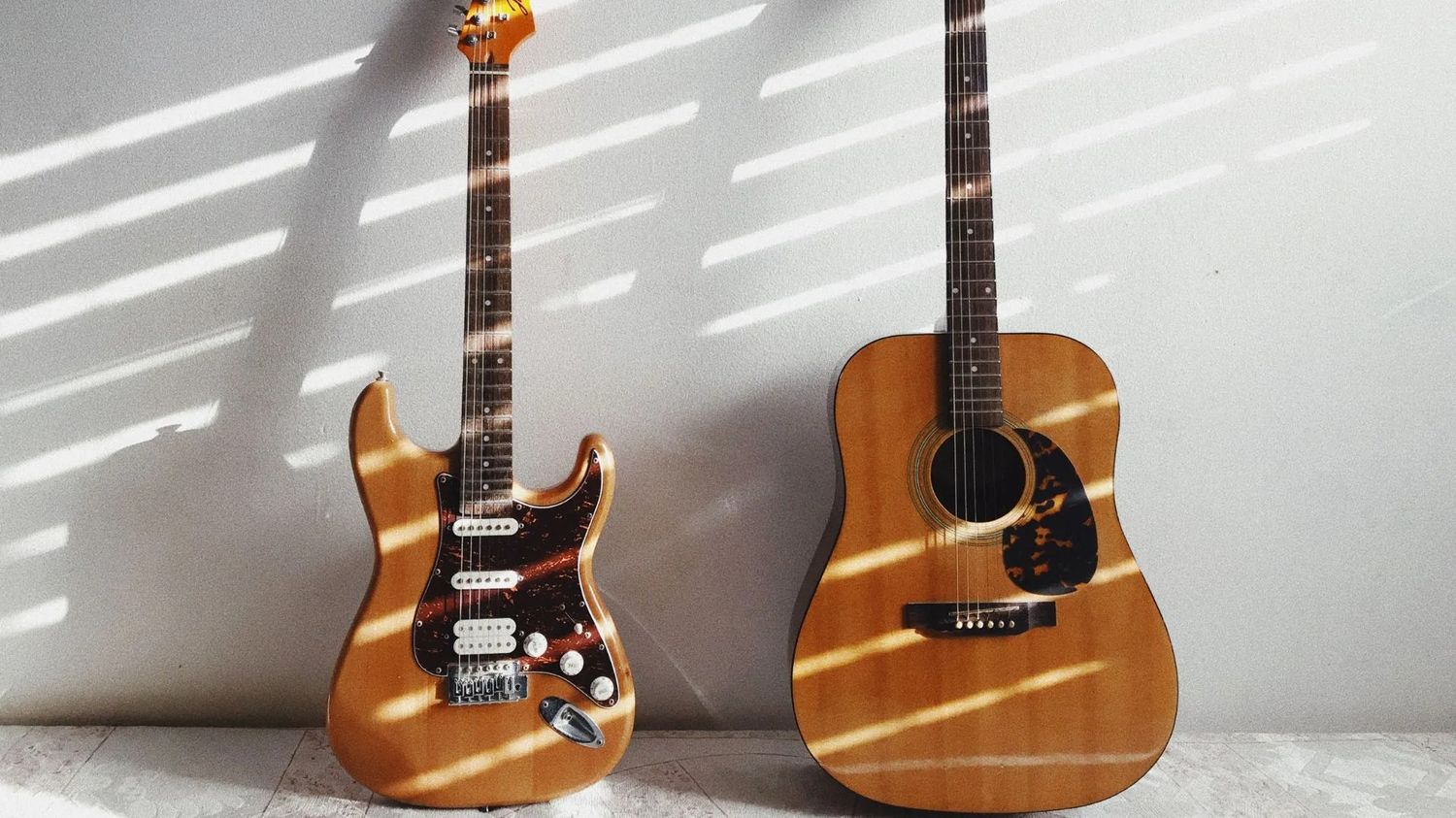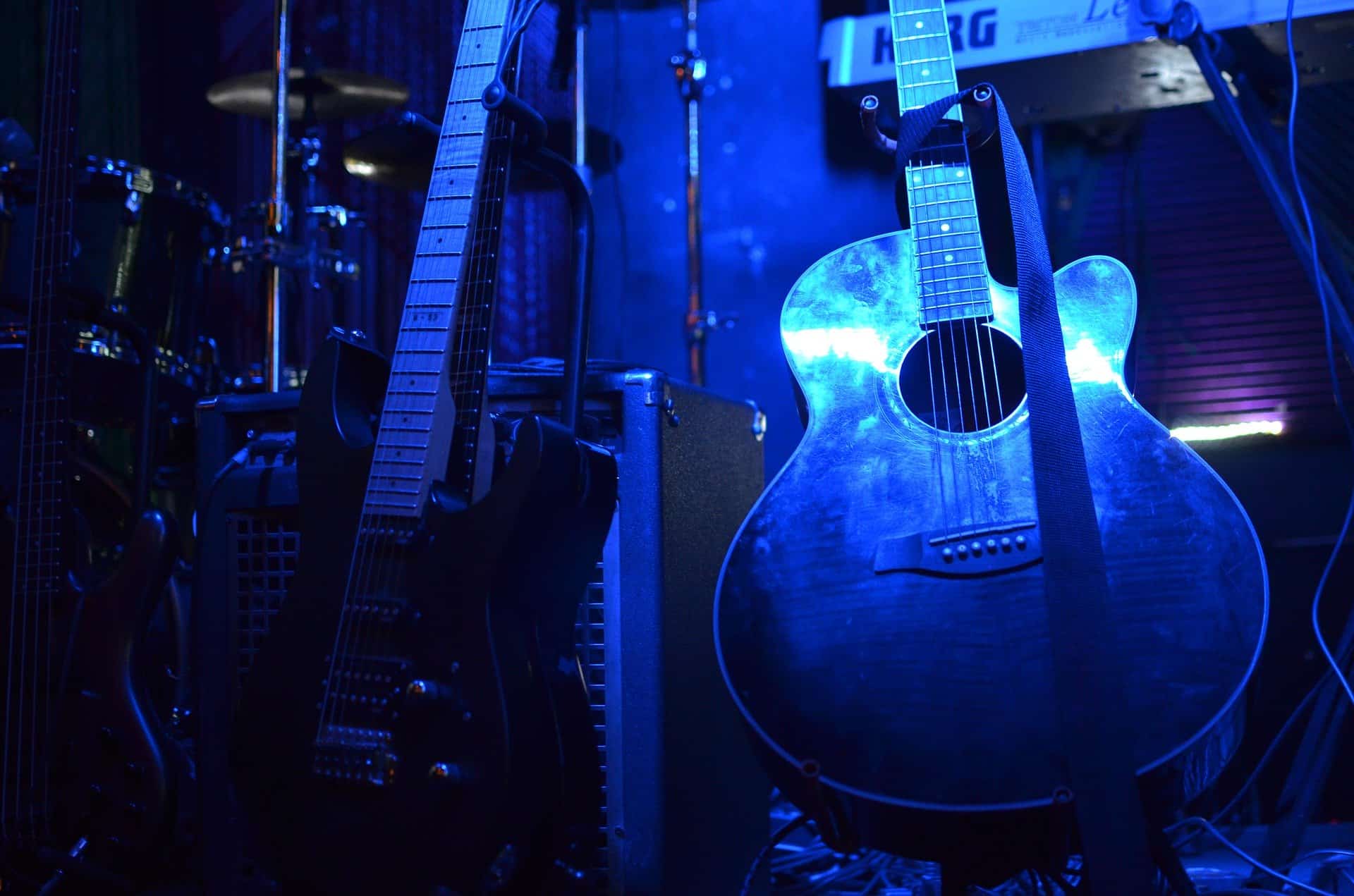Home>Instruments>Guitar>How To Play An Electric Guitar
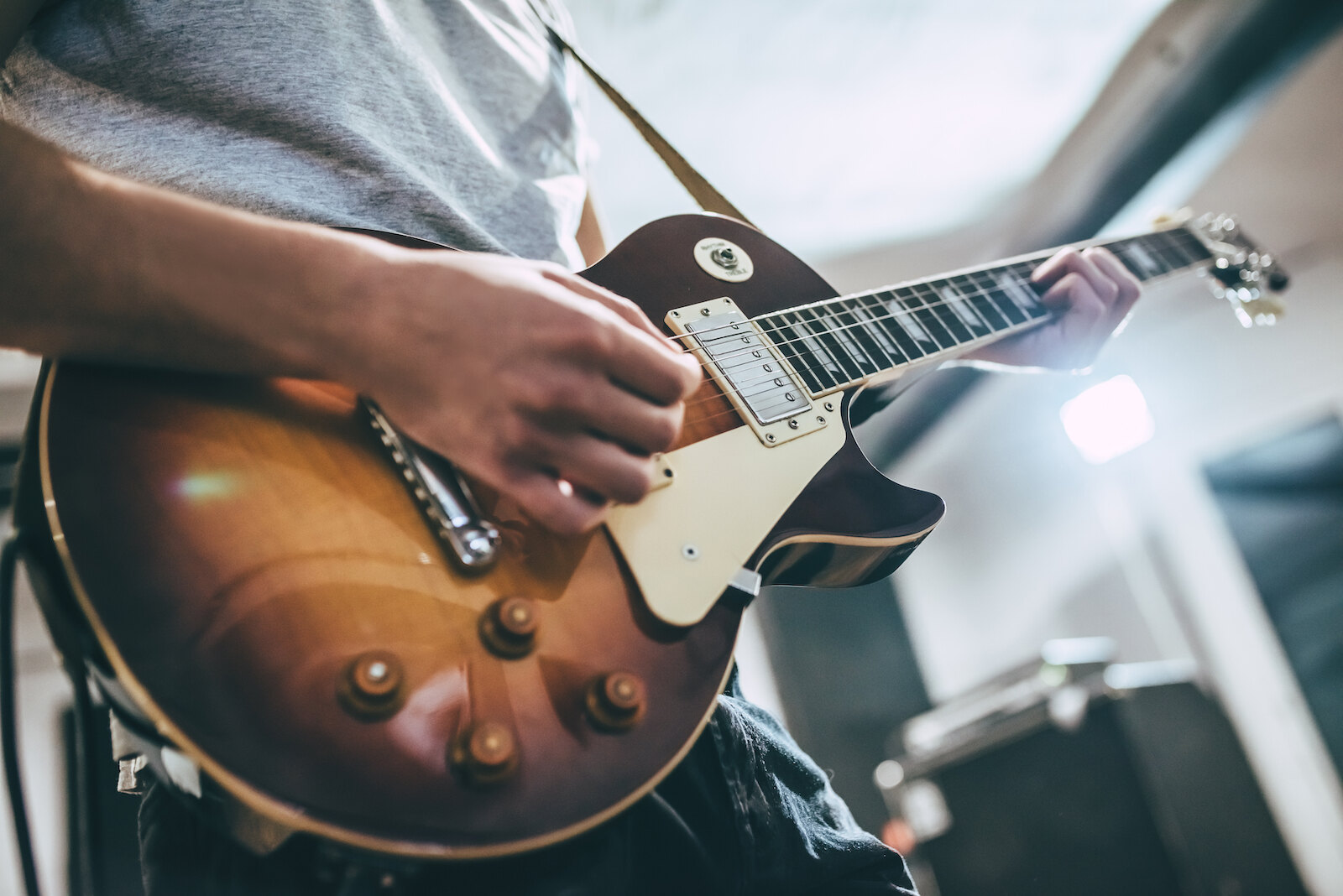

Guitar
How To Play An Electric Guitar
Published: February 13, 2024
Learn how to play an electric guitar with our comprehensive guide. Master the techniques and skills you need to become a proficient guitarist. Unlock the secrets of playing the guitar today!
(Many of the links in this article redirect to a specific reviewed product. Your purchase of these products through affiliate links helps to generate commission for AudioLover.com, at no extra cost. Learn more)
Table of Contents
Introduction
So, you've decided to embark on a musical journey with the electric guitar – congratulations! Whether you're drawn to the soulful wails of blues, the driving rhythms of rock, or the melodic leads of jazz, the electric guitar is a versatile instrument that can cater to a wide range of musical styles. Learning to play the electric guitar can be an incredibly rewarding experience, allowing you to express your creativity and emotions through music.
Playing the electric guitar is not only a fulfilling hobby but can also lead to opportunities for performing, collaborating with other musicians, and even composing your own music. Before diving into the world of electric guitar playing, it's important to understand the fundamentals of the instrument, including how to choose the right guitar, essential techniques, and the role of amplifiers and effects in shaping your sound.
In this comprehensive guide, we will explore everything you need to know to start playing the electric guitar. From selecting the perfect instrument to mastering foundational techniques and delving into the world of effects and amplification, this article will serve as your roadmap to becoming a proficient electric guitarist. Whether you're a complete beginner or an experienced acoustic player looking to make the switch to electric, this guide will provide valuable insights and tips to set you on the right path.
So, grab your guitar, plug in your amplifier, and let's embark on this electrifying musical journey together!
Choosing the Right Electric Guitar
When venturing into the world of electric guitar playing, selecting the right instrument is a crucial first step. With a myriad of options available, choosing a guitar that aligns with your musical preferences, playing style, and budget is essential. Here are some key factors to consider when choosing an electric guitar:
- Body Type: Electric guitars come in various body shapes, such as solid body, semi-hollow, and hollow body. Solid body guitars, like the iconic Fender Stratocaster and Gibson Les Paul, are versatile and well-suited for various genres. Semi-hollow and hollow body guitars, such as the Gibson ES-335, offer a warmer, more resonant tone ideal for jazz and blues.
- Neck Profile: The neck profile determines the shape and feel of the neck. Options include C-shaped, V-shaped, and U-shaped profiles, each offering a different playing experience. Choosing a neck profile that feels comfortable in your hands is crucial for ease of playability.
- Pickups: Pickups are the magnetic devices that capture string vibrations and convert them into electrical signals. Single-coil pickups deliver a bright, clear tone, while humbuckers produce a thicker, warmer sound with reduced noise. Some guitars feature a combination of both pickup types, offering a versatile sonic palette.
- Bridge Type: The bridge affects string stability and intonation. Options include fixed bridges, tremolo bridges, and locking tremolo systems. Consider the impact of different bridge types on tuning stability and your preferred tremolo effects.
- Budget and Quality: Set a realistic budget based on your financial resources and commitment to playing. While entry-level guitars are suitable for beginners, investing in a higher-quality instrument can offer better playability, tonal characteristics, and long-term satisfaction.
Before making a purchase, it’s beneficial to visit a music store and physically try out different guitars to assess their playability, comfort, and sound. Additionally, seeking advice from experienced guitarists or instructors can provide valuable insights into choosing the right instrument for your musical journey.
Remember, the perfect electric guitar is one that resonates with your musical aspirations and inspires you to pick it up and play. Once you’ve found the guitar that speaks to you, you’re one step closer to unlocking your potential as an electric guitarist.
Understanding the Guitar Components
Before diving into playing the electric guitar, it’s essential to familiarize yourself with its various components. Understanding the anatomy of the instrument will not only enhance your playing experience but also facilitate maintenance and troubleshooting. Here are the key components of an electric guitar:
- Body: The body of the guitar serves as the main housing for the pickups, bridge, and controls. It contributes significantly to the instrument’s resonance and overall tonal characteristics. The body shape and construction materials play a crucial role in determining the guitar’s sound and aesthetic appeal.
- Neck: The neck of the guitar is where the fretboard and tuning pegs are located. It is essential for the overall playability and feel of the instrument. Necks can vary in profile, scale length, and fretboard material, influencing the ease of fretting notes and performing techniques such as bends and vibrato.
- Headstock: The headstock is located at the end of the neck and houses the tuning pegs, which are used to adjust the tension of the strings. It also displays the guitar’s brand and model, adding to its visual identity.
- Pickups: Pickups are electromagnetic devices that capture string vibrations and convert them into electrical signals. They play a pivotal role in shaping the guitar’s tone and are categorized as single-coil, humbucker, or P-90, each with its distinct sonic characteristics.
- Bridge: The bridge anchors the strings to the body of the guitar and is crucial for setting the string height, intonation, and overall string stability. Different bridge types, such as fixed bridges and tremolos, offer varying degrees of control over pitch modulation and string tension.
- Controls: The control knobs and switches on the guitar allow for adjustments to the volume, tone, and pickup selection. Understanding how these controls affect the guitar’s sound empowers players to sculpt their desired tones.
By familiarizing yourself with these components, you’ll gain a deeper appreciation for the electric guitar’s craftsmanship and functionality. Additionally, understanding how each element contributes to the instrument’s sonic and tactile qualities will enable you to make informed decisions when exploring different guitar models and setups.
As you continue your musical journey, being able to identify and understand the guitar’s components will not only enhance your playing experience but also empower you to communicate effectively with other musicians, luthiers, and technicians. Embrace the intricacies of the electric guitar, and let your understanding of its components enrich your musical expression.
Tuning the Guitar
Before delving into the world of electric guitar playing, it’s essential to ensure that your instrument is properly tuned. Tuning is the process of adjusting the tension of the strings to achieve the correct pitches, allowing for harmonious and in-tune musical performance. Here’s a guide to tuning your electric guitar:
- Standard Tuning: The most common tuning for electric guitar is EADGBE, starting from the lowest-pitched string to the highest. This standard tuning provides a versatile foundation for playing a wide range of musical styles and genres.
- Tuning Methods: There are various methods for tuning the guitar, including using a dedicated guitar tuner, tuning by ear, or utilizing tuning apps available on smartphones and other devices. Electronic tuners provide precise and visual feedback, making them ideal for beginners and experienced players alike.
- Tuning Stability: Factors such as string quality, proper string winding around the tuning pegs, and stable guitar hardware contribute to tuning stability. Regular maintenance, including string changes and adjustments to the guitar’s intonation, can help maintain consistent tuning performance.
- Alternate Tunings: Beyond standard tuning, electric guitarists often explore alternate tunings, such as drop D (DADGBE) or open tunings like open G (DGDGBD). These alternate tunings can unlock new sonic possibilities and facilitate the exploration of unique chord voicings and melodic textures.
- Tuning Tools: In addition to electronic tuners, tools such as capos, which clamp onto the guitar’s neck to raise the pitch, and tuning forks can aid in achieving precise tuning and exploring different musical keys and tonalities.
Accurate tuning is the foundation of a cohesive and enjoyable musical experience. Whether you’re practicing alone, jamming with friends, or performing on stage, a well-tuned guitar ensures that your music resonates harmoniously and melodically.
By mastering the art of tuning your electric guitar, you’ll develop a keen ear for pitch and harmony, essential skills that will elevate your playing and musical understanding. Embrace the process of tuning as an integral part of your musical routine, and let the harmonious sounds of a well-tuned guitar inspire your musical creativity.
Basic Guitar Techniques
Mastering fundamental guitar techniques is essential for developing a strong foundation as an electric guitarist. These techniques not only enhance your playing dexterity but also lay the groundwork for more advanced skills and musical expression. Here are some fundamental techniques to focus on:
- Proper Fretting and Picking: Achieving clean and articulate notes begins with proper fretting hand technique and coordinated picking or plucking with the other hand. Practice fretting notes with the fingertips, just behind the frets, to minimize string buzz and ensure clear sound production.
- Strumming and Picking Patterns: Experiment with various strumming and picking patterns to develop rhythmic precision and dynamic control. Practice alternate picking (down-up motion) and explore different strumming styles to build versatility in your playing.
- Chord Transitions: Smooth transitions between chords are essential for fluid and expressive playing. Focus on lifting and placing fingers efficiently to minimize pauses and maintain the rhythmic flow when changing chords.
- Bending and Vibrato: Bending strings to raise their pitch and adding vibrato (subtle pitch modulation) to sustained notes are signature techniques that infuse expressiveness into your playing. Develop control and finesse in executing these techniques to imbue your melodies with emotion and character.
- Barre Chords and Power Chords: Barre chords involve using a single finger to fret multiple strings, while power chords, consisting of root and fifth intervals, are prevalent in rock and other genres. Mastering these chord types expands your harmonic vocabulary and facilitates playing in different keys and positions on the fretboard.
- Fingerstyle Technique: For those interested in fingerstyle playing, developing fingerpicking patterns and finger independence is crucial. This technique allows for intricate melodic playing and the ability to simultaneously play bass lines, chords, and melodies.
Consistent practice and focused attention on these fundamental techniques will sharpen your playing proficiency and pave the way for tackling more complex musical material. Remember to start at a comfortable pace and gradually increase the challenge as your skills develop.
By honing these basic guitar techniques, you’ll build a strong technical foundation and cultivate the skills necessary to express yourself musically. Embrace the learning process, and let your dedication to mastering these techniques fuel your growth as an electric guitarist.
Learning Chords and Scales
As you progress in your electric guitar journey, delving into chords and scales is pivotal for expanding your musical vocabulary and improvisational skills. Understanding chord structures and scale patterns opens the door to creating captivating melodies, harmonies, and solos. Here’s a guide to learning chords and scales on the electric guitar:
- Chords: Begin by mastering essential open chords such as E major, A major, and D major, as well as their minor counterparts. These foundational chords form the basis of countless songs and provide a solid framework for understanding harmony and chord progressions.
- Barre Chords: Barre chords, which involve barring a fret with one finger to create movable chord shapes, offer versatility and enable playing chords across the entire fretboard. Practice common barre chord shapes such as F major and B minor to expand your chordal repertoire.
- Chord Progressions: Explore common chord progressions in various keys, such as the I-IV-V progression, to internalize the relationship between chords and develop a sense of musical phrasing and structure.
- Scales: Familiarize yourself with foundational scales such as the pentatonic scale and the major and minor scales. Understanding scale patterns and intervals is essential for improvisation, soloing, and melodic composition.
- Scale Sequences and Patterns: Practice scale sequences and patterns, including ascending and descending runs, to build dexterity and fluency across the fretboard. These exercises enhance coordination and facilitate seamless scale navigation during improvisation.
- Scale Modes: Delve into scale modes such as the Ionian (major), Aeolian (natural minor), and Dorian to imbue your playing with diverse tonal colors and modal flavors. Understanding scale modes expands your melodic palette and fosters a deeper understanding of musical modes and tonal centers.
Consistent practice of chords and scales not only enhances your technical proficiency but also cultivates a deep understanding of music theory and fretboard navigation. As you internalize these foundational elements, you’ll gain the tools to express yourself creatively and fluently on the electric guitar.
Embrace the journey of learning chords and scales as an opportunity to unlock the expressive potential of the electric guitar. Whether you’re strumming chords in a rhythmic accompaniment or crafting captivating melodies through scale-based improvisation, the knowledge of chords and scales is indispensable for shaping your musical identity as a guitarist.
Using Effects and Amplifiers
Exploring the sonic possibilities of the electric guitar involves harnessing the power of effects and amplifiers to shape and elevate your sound. Whether you’re aiming for searing distortion, lush ambient textures, or crystalline cleans, understanding how to utilize effects and amplifiers is essential for crafting your desired tonal palette. Here’s a comprehensive look at using effects and amplifiers with your electric guitar:
- Gain and Distortion: Experiment with various levels of gain and distortion to achieve the desired amount of overdrive or saturation. Distortion pedals and amplifier channels offer a spectrum of tonal flavors, from classic crunch to high-gain mayhem, allowing you to tailor your sound to different musical styles.
- Modulation Effects: Delve into modulation effects such as chorus, phaser, and flanger to add movement and depth to your guitar tones. These effects impart swirling textures and spatial enhancements, enriching your sound with dynamic character.
- Time-Based Effects: Incorporate time-based effects like delay and reverb to create ambient soundscapes and add spatial dimension to your playing. Experiment with different delay subdivisions and reverb decay settings to tailor the atmospheric qualities of your sound.
- Wah and Expression Effects: Explore the expressive capabilities of wah pedals and expression effects to infuse your playing with dynamic articulation and vocal-like tonal shifts. These effects lend a human touch to your sound and are often used for emotive soloing and textural nuances.
- Amplifier Selection: Consider the tonal characteristics and power ratings of amplifiers to complement your playing style and performance needs. Whether you prefer the classic warmth of tube amplifiers or the convenience of solid-state amps, selecting the right amplifier is crucial for achieving your desired sonic identity.
- Effects Signal Chain: Experiment with different signal chain configurations for your effects pedals, considering the impact of pedal order on your overall sound. Understanding signal routing and the interaction between effects pedals allows for creative sonic sculpting and tonal experimentation.
Mastering the art of using effects and amplifiers empowers you to craft a signature sound that reflects your musical vision and artistic expression. Whether you’re aiming for a vintage-inspired bluesy tone, a modern high-gain roar, or ethereal ambient textures, the strategic application of effects and amplifiers is key to realizing your sonic aspirations.
Embrace the sonic palette at your disposal and let your creativity guide your exploration of effects and amplifiers. Whether you’re sculpting soaring lead tones, crafting lush ambient soundscapes, or driving rhythm textures, the world of effects and amplifiers offers boundless opportunities for sonic innovation and self-expression on the electric guitar.
Playing Riffs and Solos
Mastering the art of crafting captivating riffs and expressive solos is a defining aspect of electric guitar playing. Whether you’re channeling the infectious energy of rock riffs, the emotive storytelling of blues, or the technical prowess of metal solos, honing your riffing and soloing skills is essential for making a memorable musical impact. Here’s a guide to playing riffs and solos on the electric guitar:
- Riff Construction: Develop an understanding of riff construction by exploring catchy melodic motifs, power chord sequences, and rhythmic variations. Crafting memorable riffs often involves a balance of groove, melody, and attitude, creating a foundation for the song’s sonic identity.
- Technique Integration: Integrate foundational techniques such as palm muting, string bending, and hammer-ons/pull-offs into your riffing vocabulary. These techniques add articulation and dynamics to your riffs, enhancing their impact and expressiveness.
- Solo Development: Embrace the art of soloing by studying scales, phrasing, and melodic development. Understanding the interplay between scales and chord progressions is essential for creating melodic narratives and captivating solos that resonate with listeners.
- Expression and Dynamics: Infuse your solos with expression and dynamics, utilizing techniques such as vibrato, slides, and dynamic shifts in volume and intensity. These nuances add emotion and depth to your solos, allowing you to convey a wide range of feelings through your playing.
- Improvisation: Cultivate improvisational skills by exploring scale-based improvisation and spontaneous melodic creation. Improvising solos not only enhances your musical spontaneity but also nurtures your ability to respond intuitively to musical contexts and interactions with other musicians.
- Emulating Influences: Study the playing styles of influential guitarists across genres, drawing inspiration from their riffing and soloing approaches. Emulating and analyzing the techniques of guitar icons can provide valuable insights and ignite your creative spark.
Embracing the art of crafting riffs and solos allows you to carve out a distinct musical identity and leave a lasting impression through your playing. Whether you’re crafting infectious hooks, blistering lead lines, or soul-stirring solos, the ability to weave compelling riffs and solos is a hallmark of a skilled electric guitarist.
As you explore the realm of riffs and solos, let your musical instincts guide your creativity. Whether you’re crafting anthemic riffs that drive a song’s energy or delivering soulful and expressive solos that tug at the heartstrings, the art of playing riffs and solos is a boundless avenue for self-expression and musical storytelling on the electric guitar.
Practice Tips
Effective practice is the cornerstone of skill development and musical growth for electric guitarists. By adopting focused and strategic practice habits, you can maximize your progress, refine your technique, and deepen your musical understanding. Here are valuable tips to enhance your practice sessions and elevate your playing:
- Consistent Routine: Establish a consistent practice routine that aligns with your schedule and allows for regular, focused practice sessions. Consistency is key to building muscle memory, strengthening technique, and internalizing musical concepts.
- Set Clear Goals: Define specific short-term and long-term goals for your playing, whether it’s mastering a challenging riff, improving speed and accuracy, or learning new scales. Setting clear objectives provides direction and motivation for your practice sessions.
- Warm-Up Exercises: Incorporate warm-up exercises to prepare your fingers, hands, and wrists for playing. Scales, chromatic runs, and finger agility drills help limber up your muscles and promote flexibility and dexterity.
- Focus on Technique: Dedicate focused practice time to refining fundamental techniques such as fretting, picking, and chord transitions. Slow and deliberate practice allows for precise technique refinement and minimizes the risk of developing bad habits.
- Ear Training: Engage in ear training exercises to develop your ability to recognize intervals, chords, and melodies by ear. Ear training enhances your musical perception and fosters a deeper connection to the music you play.
- Practice with a Metronome: Utilize a metronome to develop a strong sense of timing, rhythm, and tempo control. Practicing with a metronome enhances your ability to play in sync with other musicians and reinforces steady and consistent playing habits.
- Repertoire Expansion: Continuously expand your repertoire by learning new songs, riffs, and solos across various genres. Diversifying your musical repertoire broadens your stylistic versatility and exposes you to different playing techniques and musical expressions.
- Record and Reflect: Record your practice sessions and performances to assess your progress, identify areas for improvement, and track your musical development over time. Self-reflection and critical listening are essential for refining your playing and musical interpretation.
- Stay Inspired: Seek inspiration from diverse musical sources, including live performances, recordings, and collaborations with other musicians. Staying inspired fuels your passion for playing and motivates you to continually push the boundaries of your musical abilities.
By integrating these practice tips into your daily routine, you’ll cultivate a disciplined and purposeful approach to your electric guitar playing. Embrace the journey of continuous improvement, and let each practice session bring you closer to realizing your musical aspirations.
Remember, effective practice is not solely about the quantity of practice time but the quality of focus and intention you bring to each session. By embracing mindful and purposeful practice, you’ll unlock your potential as an electric guitarist and embark on a fulfilling and rewarding musical journey.
Conclusion
Congratulations on embarking on the exhilarating journey of electric guitar playing! Throughout this guide, we’ve delved into the essential aspects of mastering the electric guitar, from choosing the right instrument to honing your playing skills and exploring the sonic realms of effects and amplifiers. As you immerse yourself in the world of electric guitar, remember that your musical journey is a unique and personal experience, shaped by your dedication, creativity, and passion for music.
By understanding the components of the electric guitar, mastering fundamental techniques, and exploring chords, scales, riffs, and solos, you are laying a solid foundation for your musical growth. The electric guitar offers a boundless canvas for self-expression, allowing you to channel your emotions, experiences, and musical inspirations into captivating melodies and powerful performances.
As you progress on your musical odyssey, remember that practice is the catalyst for transformation and improvement. Embrace focused and consistent practice habits, set clear musical goals, and continuously seek inspiration to fuel your artistic endeavors. Whether you’re crafting infectious riffs, soaring solos, or evocative chord progressions, your dedication to the craft will propel you toward greater musical heights.
Moreover, the electric guitar is not merely an instrument; it is a conduit for storytelling, emotion, and connection. Embrace the power of music to transcend boundaries, communicate profound narratives, and unite people through the universal language of melody and rhythm.
As you navigate the exhilarating terrain of electric guitar playing, cherish each moment of musical discovery, celebrate your progress, and remain open to the endless possibilities that music offers. Whether you’re strumming in solitude, jamming with fellow musicians, or captivating audiences with your performances, let the electric guitar be your loyal companion on your musical voyage.
May your musical endeavors be filled with joy, creativity, and fulfillment. Embrace the transformative power of music, and let your journey as an electric guitarist be a testament to the boundless potential of human expression through the art of sound.


